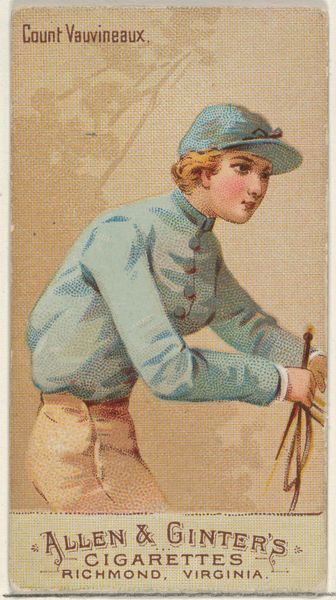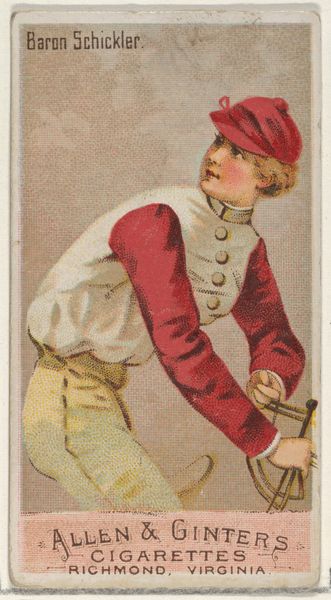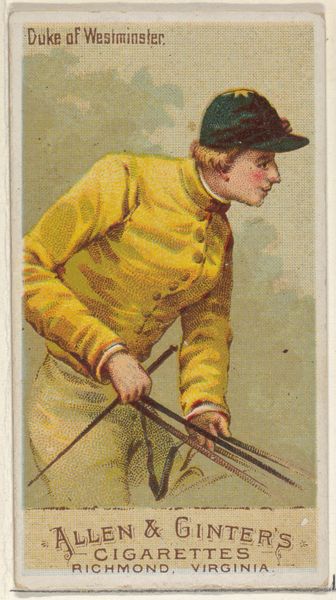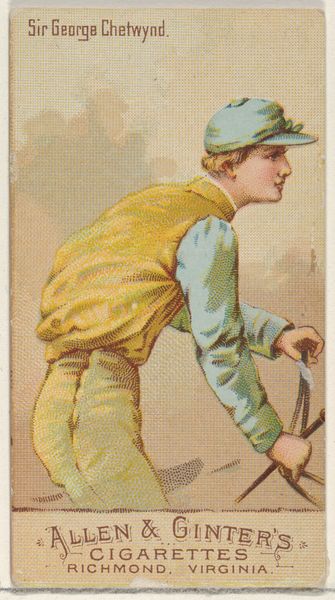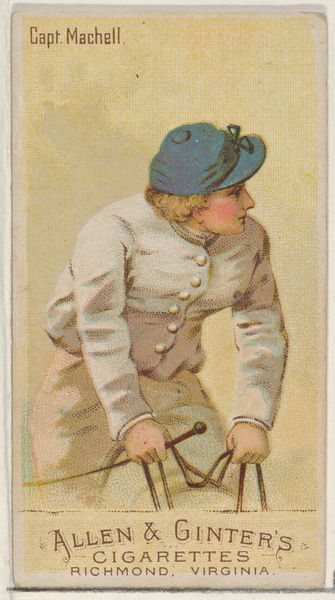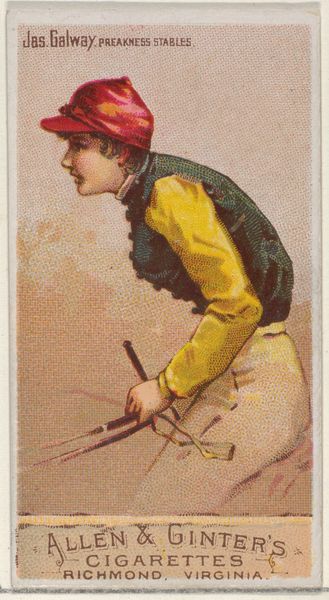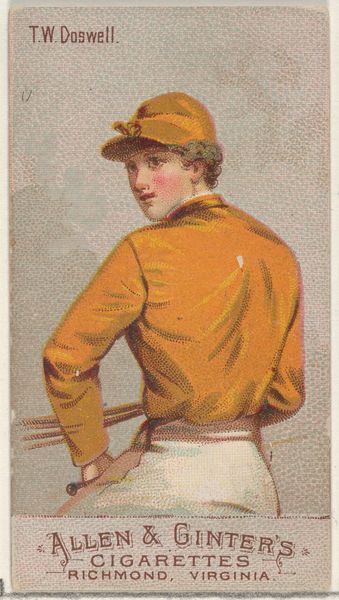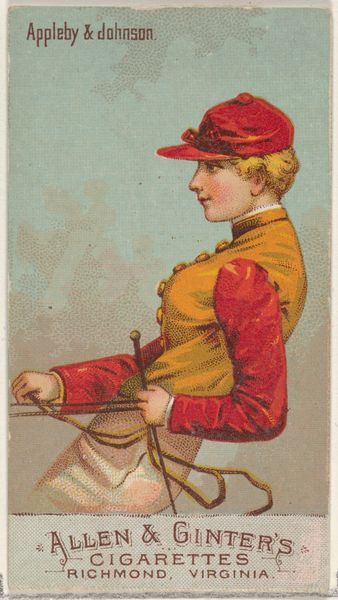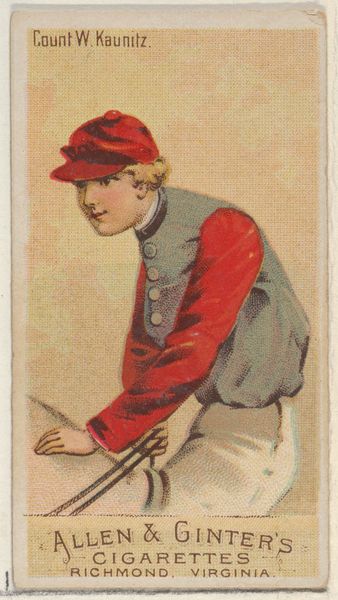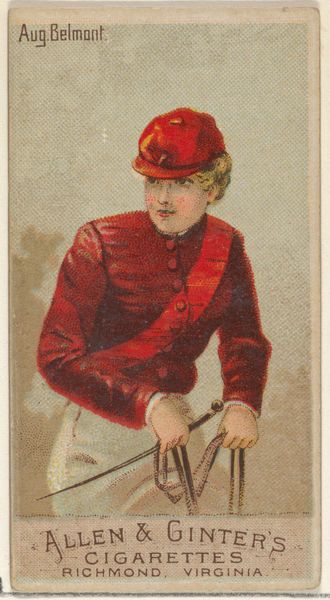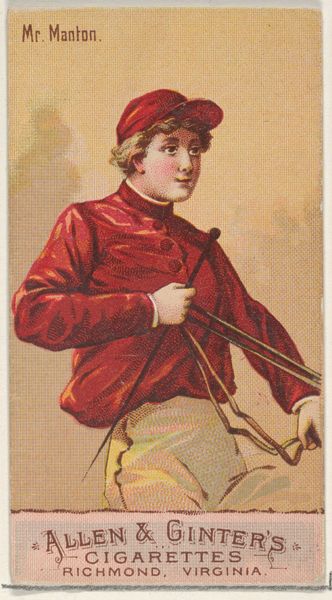
S.S. Brown, from the Racing Colors of the World series (N22b) for Allen & Ginter Cigarettes 1888
0:00
0:00
drawing, print, paper
#
portrait
#
drawing
# print
#
impressionism
#
paper
#
watercolour illustration
#
portrait art
Dimensions: Sheet: 2 3/4 x 1 1/2 in. (7 x 3.8 cm)
Copyright: Public Domain
Editor: This is "S.S. Brown," a print from the "Racing Colors of the World" series by Allen & Ginter Cigarettes, dating back to 1888. The first thing that struck me was its size – it's so small and delicate. What significance do you think these racing colors hold? Curator: The racing colors are indeed striking. Consider that these small cards were distributed with cigarettes, tokens of popular culture embedded with coded meanings. Brown’s racing silks speak to a specific owner, a lineage, and a set of social connections. Think of them as visual shorthand—insignias instantly recognized by those “in the know.” The color itself evokes a very particular feeling - prestige. What emotional impact do you believe those colors would have had on a late 19th-century audience? Editor: I suppose they would represent wealth and status. Something like seeing your family crest might invoke similar feelings. But how widely recognized were these specific colors outside of racing circles? Curator: Good question! Perhaps not universally, but certainly within elite social spheres closely tied to equestrian sports. These images offered a glimpse into that world, fostering a sense of connection or aspiration in the viewer. But think too, about the use of color—these would have been chromolithographed, adding another layer of vibrancy and attracting consumers with a bold image. Can you imagine the sensory impact within the context of late 19th century visual culture? Editor: That’s fascinating! It changes how I view the piece, connecting it more to advertising strategies and social class. Curator: Exactly! And it reminds us that even seemingly simple images carry complex cultural weight and historical meaning. It’s always crucial to situate them within the network of their time.
Comments
No comments
Be the first to comment and join the conversation on the ultimate creative platform.
